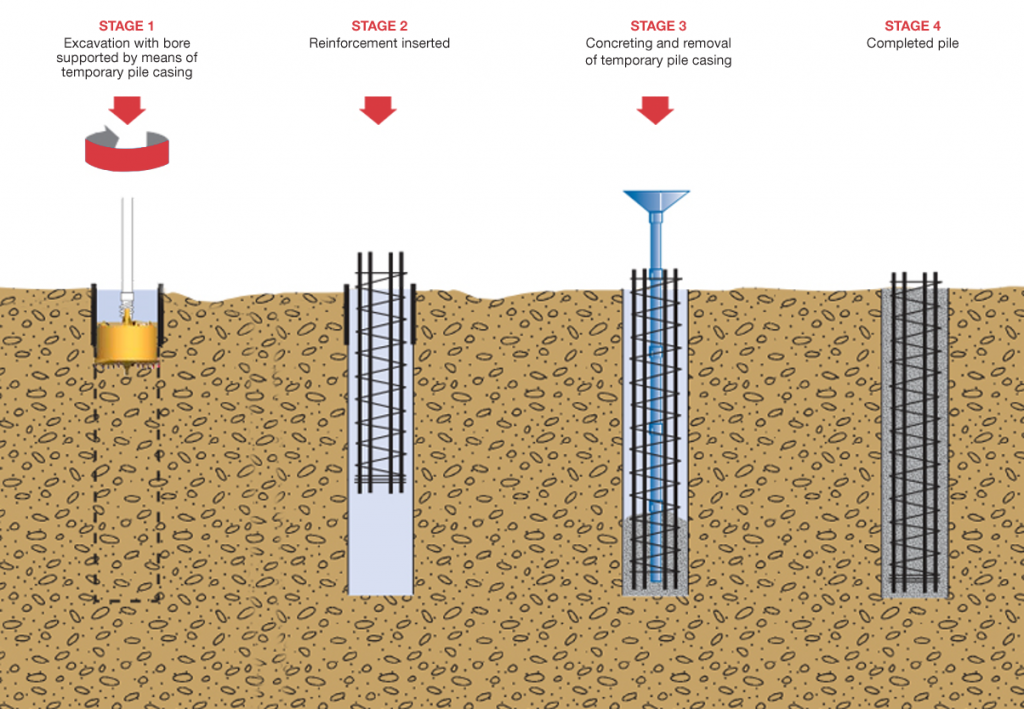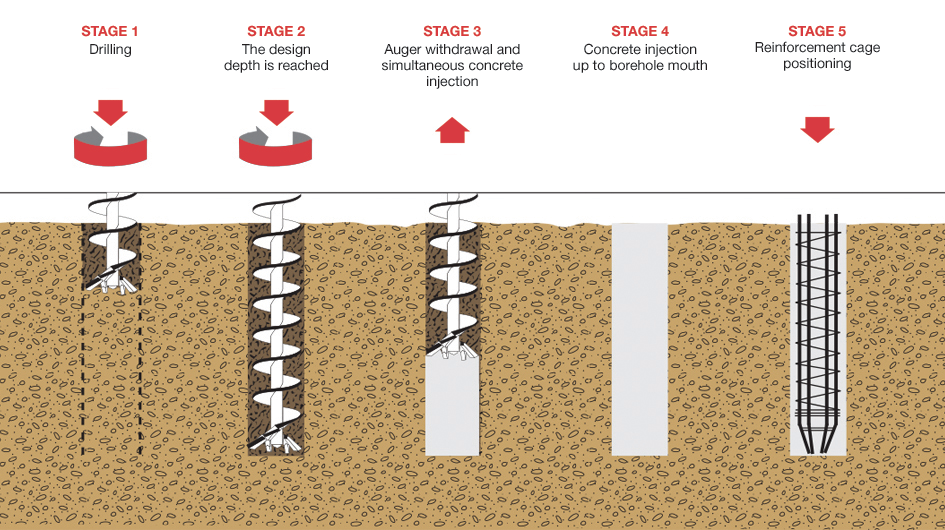Piling is a form of deep foundation and is generally used when constructing large buildings and structures. The technique is the process of supporting a heavy load beneath a traditional foundation that may not be able to cope with the weight on its own by using a piling rig.
Piling is usually required in areas where the soil may be affected by water or the deep foundations of a building may be costly and lengthy to remove. By using this technique, the surface can be supported and will in turn increase the strength of the load capacity of the building.
These days, there are various piling techniques that are used dependent on the ground conditions and structures that are being built. We have analysed Rotary v. CFA piling methods to give you an understanding of what method would be most suitable for your job and the benefits of each technique.
Rotary Bored Piling

The Rotary Piling technique uses pre-made bored piles, that are inserted into the ground to support the weight of the structure that is to be build above it. Rotary Piling Rigs are used to drill into the surface by rotating an encasing into the ground to support weak soil, and then extracting the pile bore by means of an auger, bucket or coring unit that is connected to the machines Kelly bar.
The casing is inserted into the ground to give support to the pile through unstable ground, and after the bore has been thoroughly cleaned to a suitable depth, the pile is then inserted into the borehole and the casing is removed, leaving behind the finished pile. Rotary Piling Rigs are often used in locations such as factories and town centres where it is often difficult to ensure a consistent supply of concrete. This method is primarily used for large public, commercial and industrial projects as well as transport infrastructure developments.
All of the models of Rotary Piling Rigs can be found here.
Benefits of Rotary Bored Piling
- This method can be used in almost all soil conditions.
- There is minimal risk of ground heave resulting from pile installation due to the support provided from the casing.
- Rotary Piling provides minimal noise and vibration pollution.
- There are no pile arisings to dispose of.
- The boreholes can be inspected before the placing of the piles, so the length, depth, shaft and base quality and verticality can be easily verified.
- Simple and efficient installation process.
- Can extend to greater depths when compared to other piling methods.
CFA Piling

CFA Piling (Continuous Flight Auger) was first used in the UK in the 1960’s and has quickly become one of the most common methods used. This method starts with a hollow-stemmed auger being driven into the surface by the piling rig. Once the desired depth is reached, concrete is pumped through the auger whilst it is slowly extracted, resulting in a concrete-filled borehole.
During the extraction, the auger rotates to remove the soil as it leaves the borehole. A reinforcing cage is then inserted into the concrete to provide extra stability and support whilst the concrete sets. The CFA Piling technique is best suited for lightly loaded structures and is not suitable for very soft clays or silts or loose sand or gravel surfaces. CFA piling is an ideal solution for noise and environmentally sensitive sites.
Some of the most commonly used CFA Piling Rig models are Casagrande B175 XP and the Soilmec R625.
Benefits of CFA Piling
- Low cost and efficient solution.
- CFA piles can be inserted in almost all soil conditions.
- Low noise and vibration pollution so its ideal in urban areas or areas with high levels of ground water.
- More suitable for tension loads at stability elements depending on the ability to install the cage prior to the concrete drying out.
- There are no requirements for a casing when piling, helping to reduce costs and time.
- CFA Piling Rigs can be adapted to operate in confined conditions.
Omnia Machinery can provide you with the used piling equipment you need for your upcoming projects. We stock Rotary Piling Rigs, CFA Piling Rigs, Mini Piling Rigs, Hammer Piling Rigs and much more. Browse our selection of piling and drilling machinery here. Should you have any specialist requirements, please do not hesitate to contact us.
